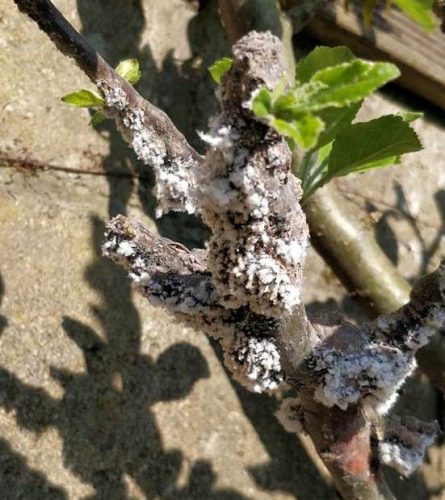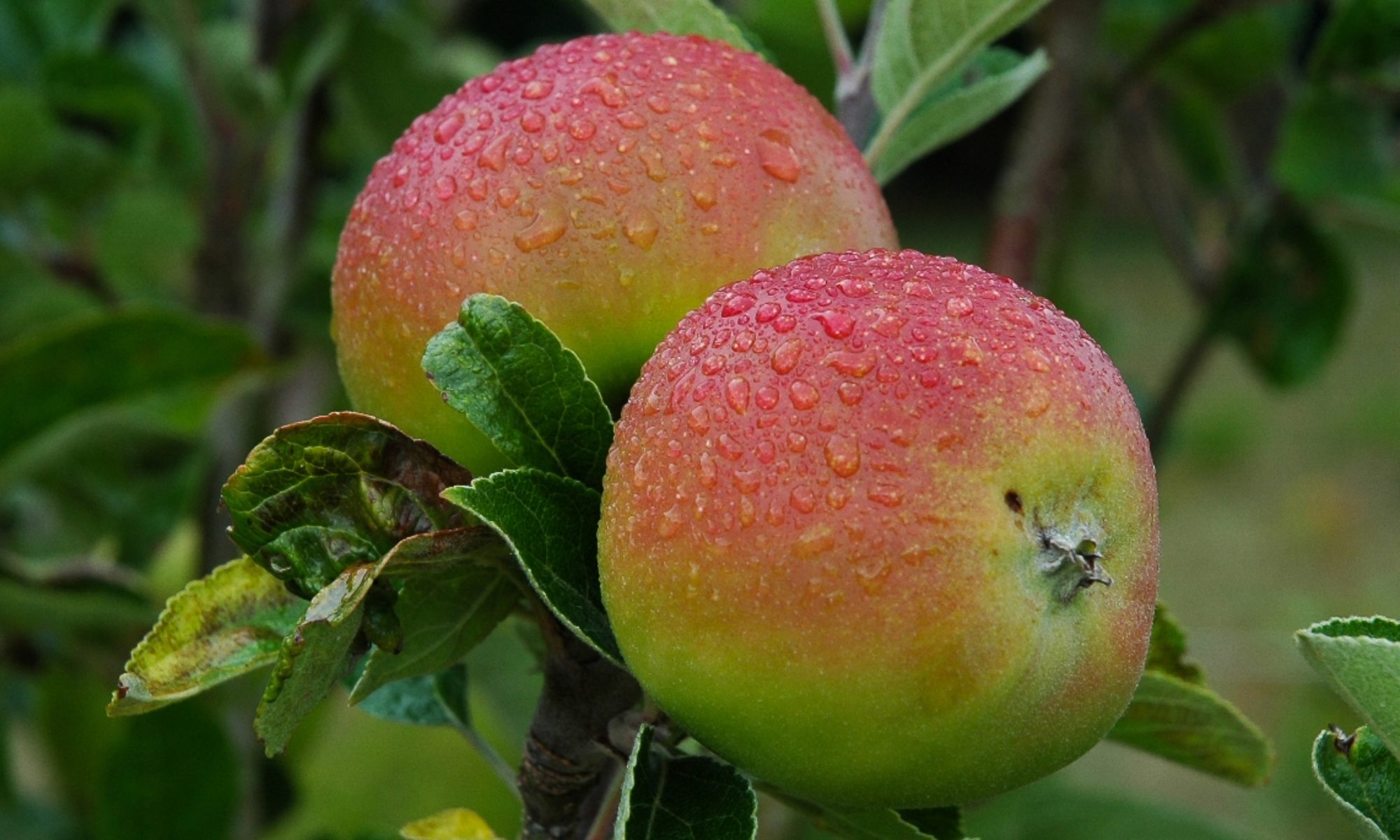Woolly apple aphid is an approximately 2 mm large aphid that lives on plant sap that is sucked from young twigs and pruning wounds.

Woolly apple aphid (Eriosoma lanigerum) is native to North America. The approximately 2 mm large aphid derives its name from the red spots that appear when the aphid is crushed. The red-brown woolly apple aphid belongs to the aphids and lives on plant sap that is sucked from young twigs and pruning wounds. Leaves leave this aphid undisturbed. The aphids leave white sticky fluff on the branches.
Galls and woody outgrowths develop on the spots punctured by the aphids. Larvae of the woolly apple aphid overwinter both above ground and underground on the roots where they can cause damage: stunted growth occurs and the tree dies if it is heavily infested.
Woolly apple aphids can spread fungi such as Neonectria ditissima. This fungus arises on the wounds caused by the breakdown of the galls and is the cause of apple canker and neonectria.
Ladybugs, earwigs, lacewings and the larvae of parasitoid wasps are the natural enemies of the Woolly apple aphid.
Affected plants
- Appelboom
- Kweepeer
- Perenboom
Remedy
Control is usually not necessary: the natural enemies keep any population limited.
Control an infestation of Woolly apple aphids with pyrethrum, soapy water spray, rhubarb spray or nettle spray.
Prevention
Earwigs, parasitoid wasps and gall midges are the natural enemies of the apple aphid, the louse that spreads fungus. So do not destroy these insects.
